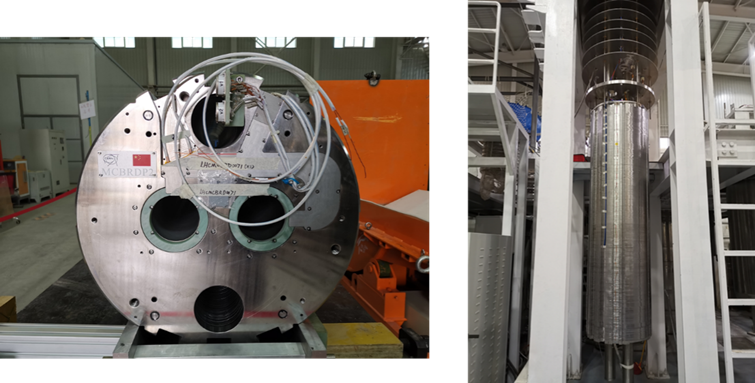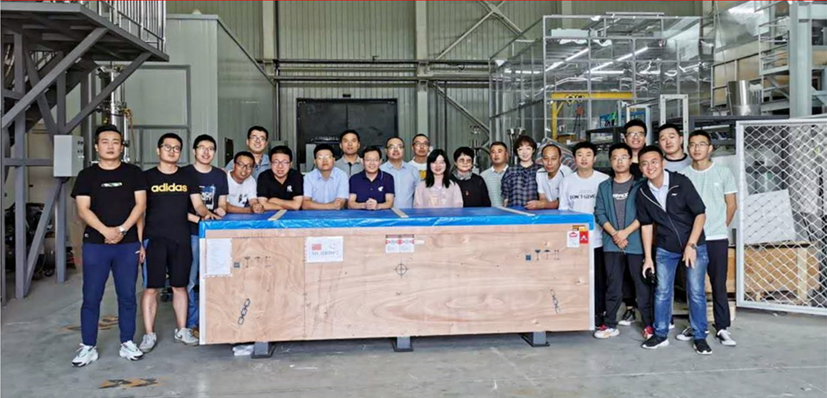Prototype of CCT Superconducting Magnet for HL-LHC Passes Performance Tests
The prototype of canted-cosine-theta (CCT) superconducting magnet, produced by a Chinese team for the High-Luminosity Large Hadron Collider (HL-LHC), passed performance tests recently, and was shipped to Europe from Tianjin port on September 2.
Led by the Institute of High Energy Physics (IHEP) of the Chinese Academy of Sciences (CAS), the Chinese team also includes members from the Institute of Modern Physics (IMP) of CAS and Western Superconducting Technologies Co., Ltd. The team is collaborating with the European Organization for Nuclear Research (CERN) in producing the superconducting magnets, which are called HL-LHC MCBRD (D2 corrector). The training and the cold test carried out at IMP aim to check if the magnets are up to standard.
After successfully passing the performance tests of magnetic field strength, magnetic field quality and 3.5-hour operation stability under 4.5K environment, the full-scale prototype of CCT double aperture superconducting magnet, which was named MCBRDP2, was shipped to CERN.

Figure 1. MCBRDP2 magnet on site for test preparation (Image by YANG Wenjie)
IMP undertook the task of training and measuring the magnetic field at room temperature and low temperature. 8 rounds of excitation tests were carried out in the low temperature test stage. After quench training, the maximum operating current of the two apertures reached 422A, and the magnet showed good quench memory effect. Finally, the two apertures were simultaneously excited to the design current (394A) and operated stably for 3.5 hours.

Figure 2. The magnetic flux variation obtained by the rotating coil and continuous stable operation test curve (Image by OU Xianjin)
All parameters of the prototype reached the design specification in the 4.5K test. The success of the prototype not only shows the feasibility of domestic technology and process, but also signifies a good start for the subsequent 12 sets of magnets production.

Figure3. MCBRDP2 magnet test team (Image by YANG Wenjie)
Contact :
LIU Fang
Institute of Modern Physics
Email: fangliu@impcas.ac.cn
Reference
Researchers Find the Threshold Voltage Controlling Nanochannel Ions Rectification
The existence of the threshold voltage which can switch the rectification state of ions in nanochannels was firstly revealed by researchers from the Institute of Modern Physics ( IMP ) .When the threshold electric field is exceeded , the carboxyl-cation bond of the PET molecular chain on the pore surface breaks , which leads to the dissociation of cation and the rearrangement of the molecular chain on the pore surface .


 甘公网安备 62010202000713号
甘公网安备 62010202000713号


